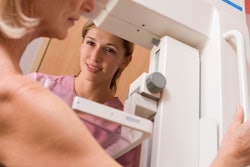
Could the U.K. National Health Service (NHS) have detected sooner the fact that nearly 500,000 women were not invited to their final round of mammography in the country's national breast screening program? The authors of a new correspondence article published on 24 May in the Lancet suggest that it might have.
Earlier this month, U.K. Health Secretary Jeremy Hunt disclosed to the House of Commons that an apparent computer failure resulted in some 450,000 women not being invited to their final round of screening in the national screening program run by Public Health England (PHE). Statistical models indicate that between 135 and 270 women may have died from 2009 to 2018 due to cancers that could have been detected on screening, Hunt said.
In the Lancet article, Shama Sheikh and Prof. Peter Sasieni from King's College London ponder whether the computer error could have been discovered earlier (May 24, 2018, Lancet). To find out, they examined annual statistics from PHE's Breast Cancer Screening Program from 2004-2005 to 2016-2017.
Based on their analysis, they believe that the glitch may have actually begun in 2004, the year that the program decided to extend the age range of eligible women to 65 to 70.
To back up their hypothesis, Sheikh and Sasieni point out that for women between the ages of 50 and 64, between 34% and 38% of eligible women were invited each year. For women between 65 and 70, however, the percentage of women invited has ranged from 31% in 2005-2006 to 35% in 2016-2017. This "deficit of invitations" came to 20,000 to 50,000 each year, with a total of 500,000 women over the study period.
"The proportion invited aged 65-70 was always less than the proportion invited aged 55-64," they wrote.
What's more, the percentage did not change in 2009, the year that PHE has stated that the glitch began -- causing Sheikh and Sasieni to conclude that the problem began in 2004, when the age range was extended.
On the positive side, it seems that the magnitude of the problem was ameliorated somewhat when women ages 71 to 73 were invited for breast screening in 2007 in some parts of the U.K. In areas of the country where this occurred, an appropriate number of invitations were sent out to women ages 65 to 70.
But all in all, Sheikh and Sasieni believe that evidence of the glitch was there in the data all along -- if anyone had bothered to look.
"Data that might have alerted people to the lower than expected number of invitations being sent to women aged 70 were publicly available, but no one looked at them carefully enough," they wrote. "Some of the fault lies in the way the data were presented, but it is also unclear whose responsibility it is to monitor such outcomes."



















